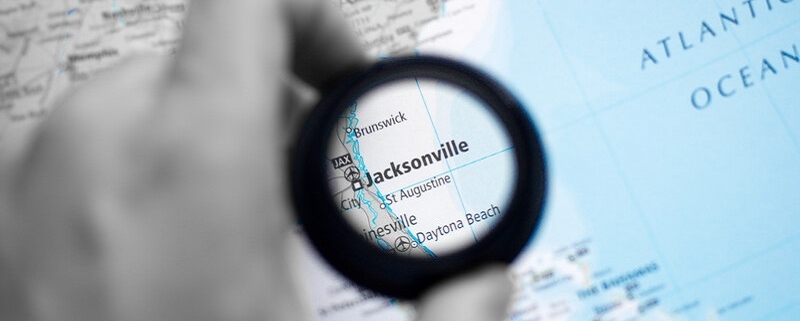Boosting amenities offerings are being given strong consideration for healthcare facilities as a way to create a more positive experience for the patient, leading them to be more likely to choose that provider thereafter, according to a new report from JLL.
“Colocation of traditional medical office space with primary care or specialists could allow health systems to utilize their current real estate portfolio more fully, and if done well could pay dividends,” the report said.
Some 63% of respondents said they would be interested in visiting a healthcare facility for an additional amenity. 80% of Gen Z and 77% of Millennials said they would be interested in visiting additional amenities at a healthcare facility, compared with 62% of Gen X and only 44% of Baby Boomers.
Alternative medicine such as chiropractors or acupuncturists was the No. 1 amenity choice for all four cohorts. Restaurants were the top choice for Gen Z and that amenity also ranked high in the other three cohorts. Fitness centers were the second choice for Gen Z and Millennials and the third choice for Boomers. Childcare and retail scored lowest among the six amenity choices offered.
Younger generations were more likely to respond that they would be interested in visiting additional amenities at a healthcare facility, according to JLL. Younger generations were less likely to have a primary care provider, instead preferring urgent care or the hospital emergency room department.
“Past experience” was a major factor in the choice of a provider, with over 40% of participants ranking it in the top 5 for all care types and over 50% for primary or preventative care and urgent care.
Alison Flynn Gaffney, FACHE, President, Healthcare Division, JLL, tells GlobeSt.com that wholistic health and wellness campuses that include fitness, retail, food services, and other mixed-use amenities curate an environment that looks beyond the immediate care need, giving consumers an experience with the health system complementary to medical needs.
“This creates more stickiness for existing patients or could introduce new consumers to the brand and increasing familiarity could make it more likely they will choose the location for a future care need,” Flynn Gaffney said. “Additionally, patients are looking for ease, and combing seeking care with other needs like everyday errands makes their lives easier. Healthcare co-located with pharmacies, retail, and restaurants achieves this, and that affects the overall patient experience.”
Seniors, in particular, are drawn to amenities, according to Trish Benson, Chief Strategy Officer, Transitions, such as relaxation areas and meditation rooms as they can provide a peaceful space to relax, meditate, and relieve stress.
“Fitness centers and gyms can help seniors maintain an active lifestyle and improve their physical fitness, which can help prevent chronic diseases and disabilities associated with aging,” Benson said. “Nutrition and healthy cooking classes can help seniors learn about healthy eating habits and meal planning, which can promote their overall health and wellbeing.”
She said that pet therapy programs can provide seniors with the companionship of animals, which can help reduce feelings of loneliness and depression and advanced technology and telemedicine services can help seniors access medical care and services regardless of their location, providing them with more convenience and flexibility. Overall, these amenities can enhance seniors’ quality of life and promote healthy aging.
And as demand for convenient medical and behavioral health services is spiking, healthcare is being brought closer to home with a variety of convenient outpatient services delivered in standalone locations or attached to senior or affordable living facilities, Brian Kane, Skender Construction Vice President, Healthcare, tells GlobeSt.com.
Its Torrence Place project in Lansing, Ill., is one example, “offering 48 accessible and adaptable multifamily units with a focus on veterans and people with disabilities and also includes a 3,600-square foot health clinic and pharmacy on-site.
“Adding to the convenience theme, we’ve seen some outpatient healthcare projects provide a thoughtful—not random or accidental— collection of specializations under one roof,” Kane said.
Skender recently completed the 12,000-square-foot buildout of Northwestern Medicine’s Pain and Spine Center in Bloomingdale, Ill., and it offers related specializations like pain management, neurology, physical therapy, and chiropractic in one convenient clinic.
“We’re also seeing an evolution of the amenity offering in major medical facilities and inpatient hospitals, mostly with the addition of safety, comfort, and sustainability features,” Kane said. “In projects such as the new IU Health Bloomington Regional Academic Health Center in Bloomington, we’ve added features like specialized ventilation systems and touchless fixtures to aid in infection control; natural and energy-efficient lighting to reduce stress; and modular designs with movable partitions to allow for easy reconfiguration of space like converting regular rooms into intensive care units.”
Kane said his healthcare clients are increasingly asking for the addition of outdoor space, and what used to be categorized as “nice to have” is now a baseline essential.
Hospitals are seeing similar trends, according to Doug King, Vice President and National Heathcare Sector Lead at Project Management Advisors, as many are eliminating the traditional cafeteria and replacing it with retail, food, and shopping options for visitors, staff, and patients.
Northwestern Medicine in Chicago started this trend about 10 years ago, eliminating its cafeteria and putting a robust retail program in its place.
More recently, the new Peter Gilgan Mississauga Hospital in Ontario, Canada, is following suit, setting up retail and dining options in place of a cafeteria from the start.
“This works well for urban hospitals, which get a good deal of foot traffic,” King tells GlobeSt.com. “We are also seeing healthcare facilities provide outdoor access for staff, patients, and families on multiple levels of the building.”
For example, one large Midwestern hospital recently opted to build a rooftop garden that staff, patients, and siblings of the children in the pediatric and NICU areas can access for a little green space and outdoor therapy. The Peter Gilgan Mississauga Hospital is exploring providing staff outdoor respite areas on multiple levels in the facility as well.
“Many hospitals are also expanding parking access for patients directly below the hospital,” King said. “Additionally, an increasing number of healthcare centers are providing childcare options for patients. Members of PMA recently conducted an IRB-approved, grant-funded research study which found that people living below the poverty line often miss medical appointments because they can’t find childcare, so integrating daycare centers into medical settings can help to alleviate that issue for many patients.”
To mitigate staff shortages and decrease the risk of infection, many healthcare facilities are using AI and autonomous robotic vehicles to handle some of the repetitive service, delivery, and pickup functions previously done by service staff, according to King.
Source: GlobeSt.





